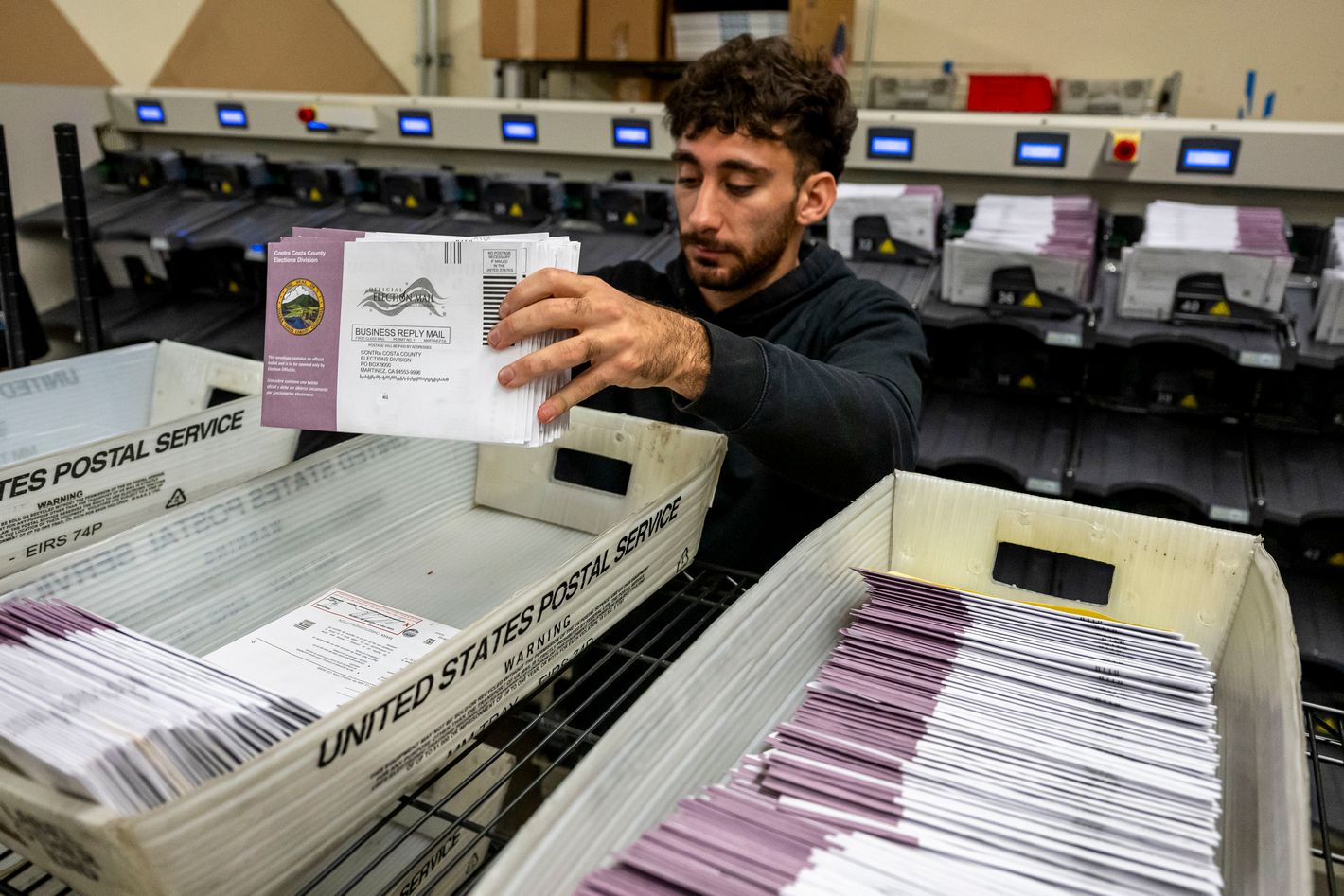Photo: David Paul Morris/Bloomberg/Getty Images
It’s a bit of a surprise that it’s taken Donald Trump over two months in office to extend his broad-based campaign of presidential power grabs into the familiar area of election administration. After all, the claim that Democrats have systematically rigged elections is one of the great foundational myths of the MAGA movement, speciously refuting any electoral setback Trump or his minions might experience and providing a sinister rationale for the supposed “open borders” policies of the Biden administration (you know, the really stupid but persistent belief that migrants were being herded across the border by Democrats and then immediately registered to vote).
As it happens, Trump’s 96th executive order of 2025 finally addressed the bugaboo of phantom election fraud and arrogated to the president powers held jointly by the states (which operate federal elections) and by Congress (which has explicit constitutional powers to regulate federal elections). Congress has in turn delegated some of its regulatory functions to an independent bipartisan agency it created after the 2000 presidential-election fiasco, the U.S. Election Assistance Commission (EAC), which helps states purchase election technology and also provides a form that can be used anywhere in the country to register for federal elections. The president’s powers in this area have traditionally been understood as strictly limited to enforcing congressional voting-rights statutes and basic constitutional rights that touch on the right to vote.
None of this precedent deterred Trump. He’s ordering the EAC to begin pushing for (and reflecting in its own voter-registration system) documentary verification of citizenship, and he’s enlisting federal agencies (including, rather ominously, DOGE) in policing voter rolls to expose and prohibit alleged noncitizen voting. In effect, this is an imposition by executive action of the SAVE Act that Trump and congressional Republicans pushed last year to dramatize their entirely undocumented contention that noncitizen voting was widespread. But while the evil it purports to address appears to be imaginary (or so limited as to be insignificant in the outcome of actual elections), and the requirement redundant (noncitizen voting is already illegal), the evil it would impose via burdensome paperwork requirements that will keep a lot of older and poorer citizens from exercising their right to vote is very real, as the Center for American Progress explained:
[T]he legislation would require the vast majority of Americans to rely on a passport or birth certificate to prove their citizenship. While this may sound easy for many Americans, the reality is that more than 140 million American citizens do not possess a passport and as many as 69 million women who have taken their spouse’s name do not have a birth certificate matching their legal name.
Because documentation would need to be presented in person, the legislation would, in practice, prevent Americans from being able to register to vote by mail; end voter registration drives nationwide; and eliminate online voter registration overnight — a service 42 states rely on. Americans would need to appear in person, with original documentation, to even simply update their voter registration information for a change of address or change in party affiliation.
As election-law expert Rick Hasen wrote after reviewing the Trump EO: “The aim here is voter suppression pure and simple.”
But the order goes further, instructing the Department of Justice to enforce a congressionally established national Election Day by interfering with state mail-ballot systems. 18 states currently allow mail ballots postmarked by Election Day to be counted subsequently (usually by a fixed deadline shortly after Election Day). Trump and other Republicans have regularly claimed without any evidence that post-election receipt of ballots filled out, sealed and mailed by Election Day is inherently fraudulent. Trump’s order itself says: “This is like allowing persons who arrive 3 days after Election Day, perhaps after a winner has been declared, to vote in person at a former voting precinct, which would be absurd.” It’s not like that at all, since under the systems he is attacking, the voter relinquishes control of the ballot the moment he puts it in the mail or places it in a drop-box. It’s absolutely no different than voting in person before or on Election Day.
Trump’s motive for going after this aspect of state election administration is unclear. It could stem from research evidence that the last-cast mail ballots tend to skew Democratic (the so-called “blue shift” phenomenon). Or it could represent a first step toward Trump’s often-stated intention to return the country to a system of in-person voting on Election Day, period.
As with so many other executive orders expanding presidential powers into previously unimagined areas of governance, this one will be subjected to judicial scrutiny. But it represents a potentially alarming signal that the administration’s smash-and-grab tactics of doing as much damage as possible before the inevitable voter backlash will eventually give way to measures designed to reduce the odds that voters will have the power to stop it all.

